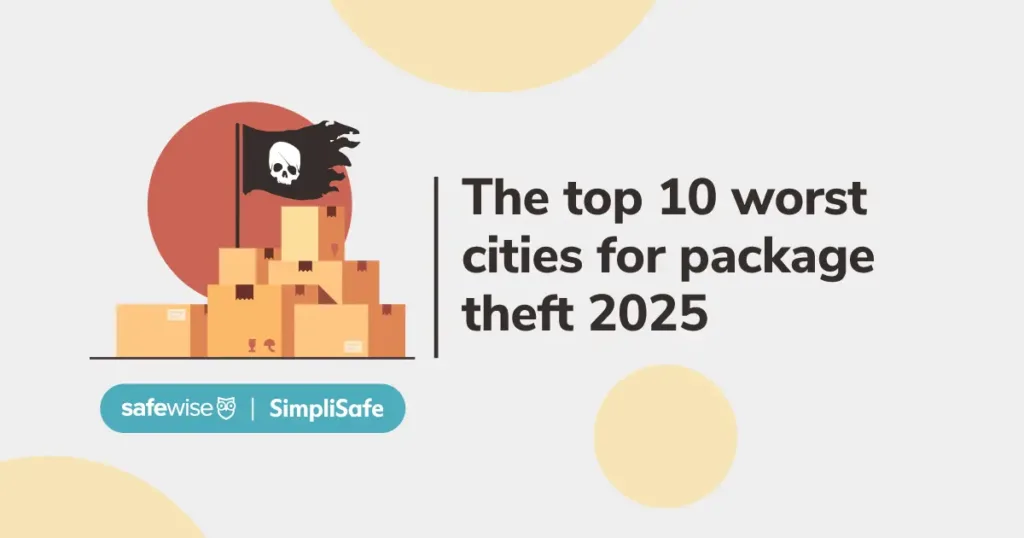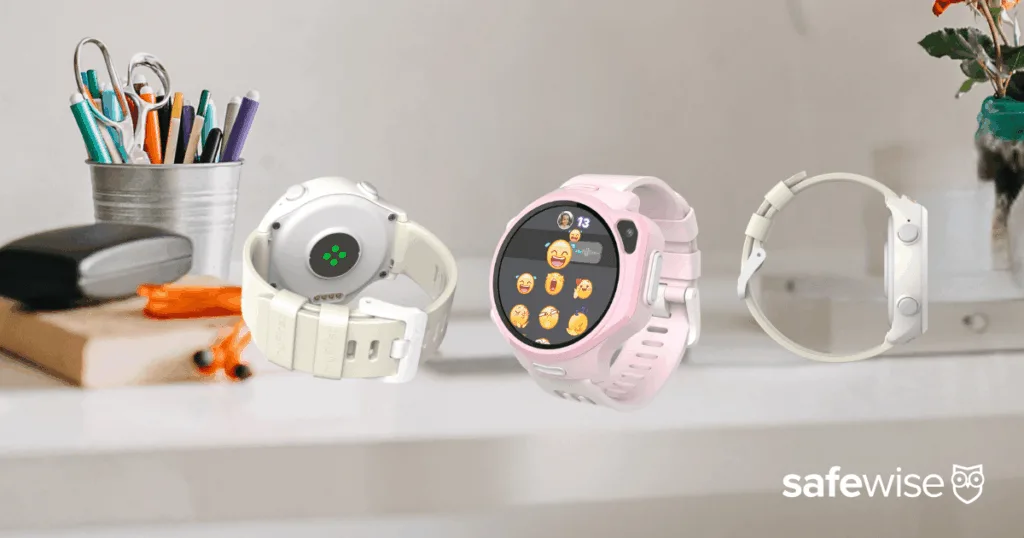A third of the U.S. uses TikTok, but is TikTok safe? As a social media expert for over ten years and a safety expert for longer than that, I can tell you this: It’s as safe as just about any other social media platform. It doesn’t infect your phone with malware, but it comes with some safety risks like scams and saved user data. Here’s what you need to know to stay safe on TikTok.
Is TikTok Safe? Here’s What You Need To Know
For over 12 years, SafeWise has conducted independent research and testing to write unbiased, human reviews (not robots). Read our methodology.
With 20+ years in tech journalism and social media specialist, Alina blends safety expertise with her passion for simplifying technology. Alina has tested hundreds of safety and security devices, is trained as a first responder, and has worked as a volunteer firefighter.
TikTok is a breeding ground for dangerous trends such as the Blackout challenge or BORG drinking trend. If you have a kiddo or teen on the app, be sure to stay on top of the latest trends and talk to your child about them.
TikTok safety tips

Image: SafeWise

Image: Alina Bradford, SafeWise
By signing up, you agree to our Terms and Conditions and Privacy Policy.
There are scams aplenty
Why is TikTok somewhat dangerous? Well, one reason is because of the abundance of scams. The Federal Trade Commission (FTC) considers social media of any type a goldmine for scammers.¹ That's because any social media app that can direct message (DM) other users has the potential for scams.
I've got a decent following on TikTok, and I've been targeted by just about every scam you can think of. Here are a few to watch out for in your DMs:
- Follower or like scams: This is where the messenger promises to boost your followers or video likes for a low fee, making you appear like a TikTok star. Just block them and report them for spam.
- Romance scams: These smooth-talkers will tell you you’re the most beautiful thing they’ve ever seen ... then hit you up for money as the conversations progress. Or they will try to get as much information out of you as possible to steal your identity. Don’t engage with these catfish.
- Investment scams: Looking to make a quick buck? Who isn’t? That’s how these scamsters attack. They draw you in with promises about making fast money through crypto or other investments and then take you for as much as possible. Block and report.
- Phishing scams: Don’t click links. Just don’t do it. Scammers can use these links to download malware onto your phone, which can steal private information.
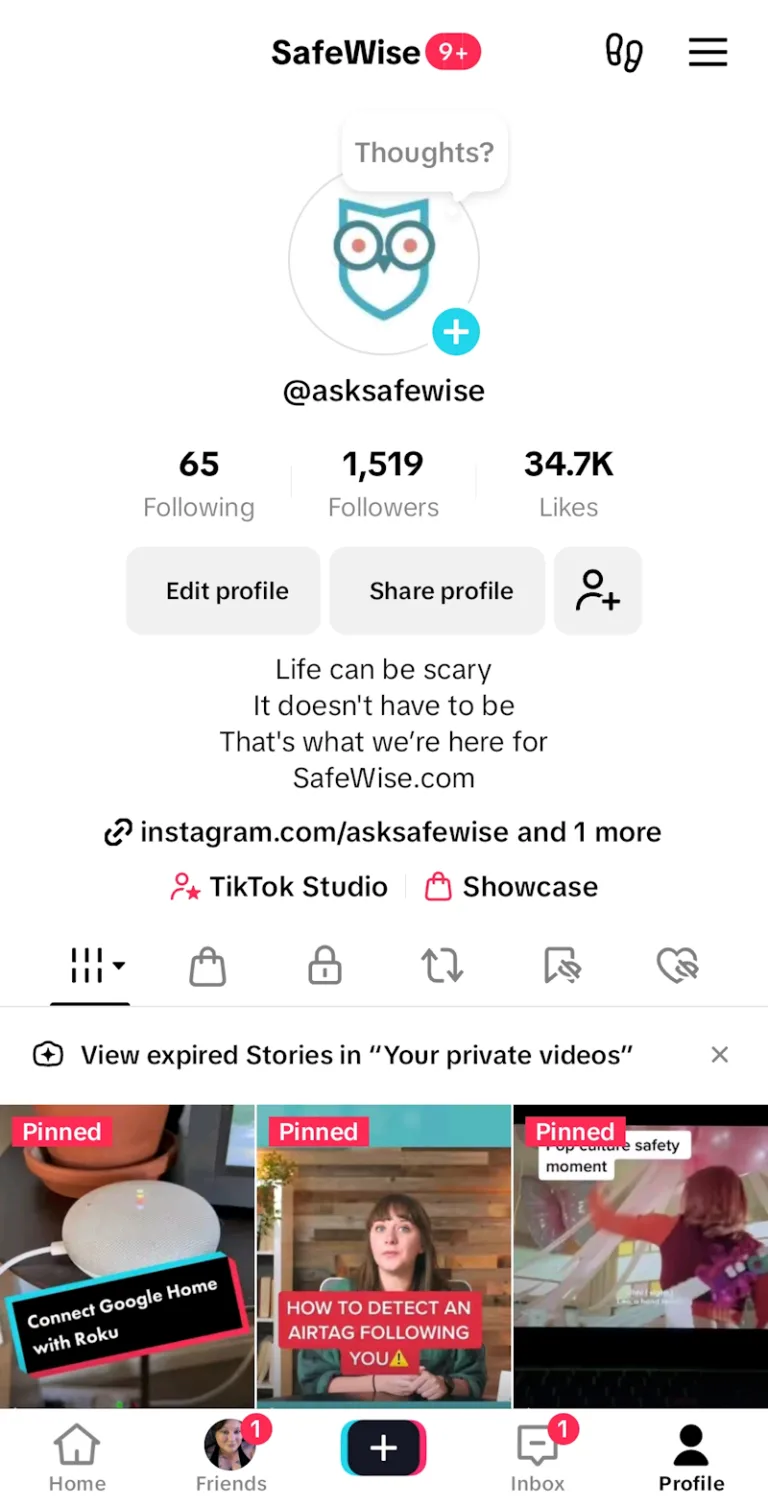
Image: SafeWise
Some scammers will even make themselves look like they work for TikTok and send you messages about your account. Real messages from TikTok will show up in your notifications or as a pop-up in the app, not as a DM. If you get an email from TikTok, make sure it's from an official account and not a Gmail account.
Compare the best internet security products
Amazon.com price as of post date. Offers and availability may vary by location and are subject to change. Read full disclaimer.
*First year only. Regular price $99.48/yr.
**First year only. Regular price $59.99/yr.
Your information isn’t private
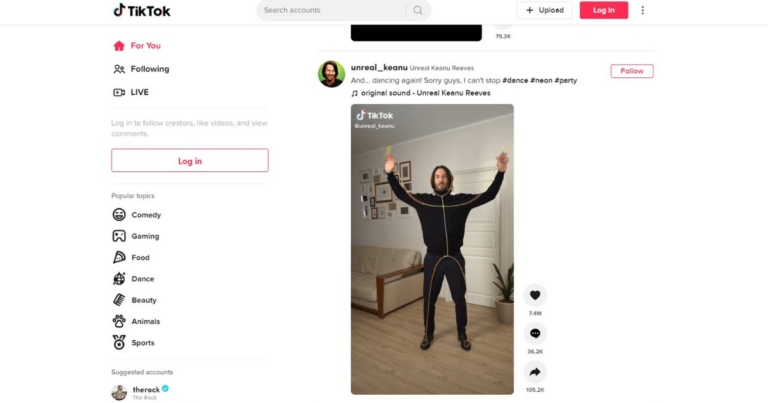
Image: SafeWise
Like many other social media sites (looking at you, Facebook), TikTok collects information about you when you use it. You can read its privacy policy yourself, but if that’s “TL;DR”, this is a summary of the information it collects:
- Any information you add to your profile, such as your age, language, phone number, photo, and email address
- Any information it can gain from third-party accounts (such as Facebook or Google) when you link them to your TikTok account
- Any content you upload, including photos and videos
- The information it can find about you from other “publicly available sources”
- Any information about what you searched for on TikTok
- Any information about your phone, including your IP address, your mobile carrier, time zone, apps, and file names found on your phone
- Keystroke patterns or rhythms
- Location data
- Messages you send and receive from other users
Once TikTok has your information, the company uses it in a variety of ways. Some of the uses include tailoring what type of TikTok videos show up in your For You Page (FYP) and learning how to target you with ads. TikTok also shares your information with third parties.
In late March 2023, TikTok announced that it has plans to store American data in America with American companies overseen by American personnel, which it carried through with. It has continued to say it will continue to ensure there is no app manipulation by any government entity. This change is in response to concerns raised during the United States congressional hearings against TikTok.
Why is TikTok bad for privacy and self-image? There’s an easy answer: your videos. TikTok will analyze your photos and videos, according to its privacy policy, to identify “the objects and scenery that appear, the existence and location within an image of face and body features and attributes, the nature of the audio, and the text of the words spoken in your User Content.”
There have been reports that TikTok analyzes faces and bodies and lowers the views of users seen as overweight, disabled, or unattractive.¹ Does it still do that? I don't know, but it's a good thing to keep in mind.
Younger TikTok users are vulnerable
Is TikTok bad for kids? Is it safe?
“According to new data findings, TikTok is the most worrying social media app," says a spokesperson from Canopy.us, a digital family safety app. "While there are many risks posed to young users of the platform, parents can do several things to protect their kids from dangerous content."
TikTok has special protections for kids 17 and younger.
Here’s a summary of TikTok’s age-based restrictions:
-
Ages 13 to 15:
-
Accounts are private by default.
-
Only approved followers can see your content and profile details and comment.
-
Others cannot Duet, Stitch, download, or reuse your videos in stickers or Stories.
- A minor's account won't be suggested to others. You can turn it on in your privacy settings.
- DMs are unavailable.
-
-
Ages 16 to 17:
-
Accounts are also private by default, but privacy settings can be changed at any time.
-
Duets, Stitches, downloads, stickers, and Story shares are disabled for private accounts.
- The account won't be suggested to others. You can turn it off in your privacy settings.
- DMing is turned off by default, but can be turned on in the settings.
- Only followers can comment as a default if your account is private, but this can be changed.
- Friends can make stickers from content on public accounts. It can be changed to everyone in settings.
-
While this sounds good, we’d still worry about kids seeing videos with mature or inappropriate content and spending too much time on the app. A good solution is to use a parental control app like Bark.
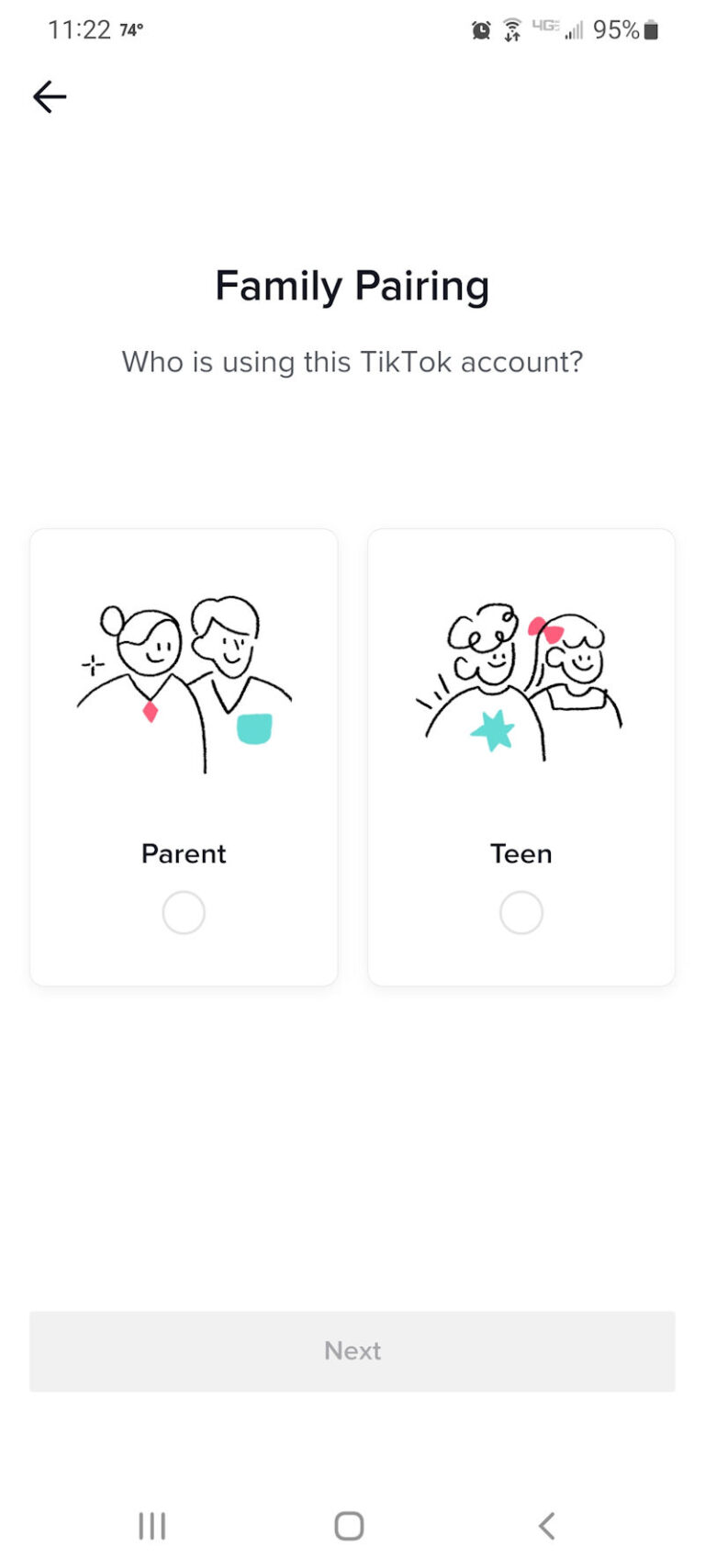
Image: SafeWise
In the settings, you can go to the Family Pairing option to limit what the young person in your life sees on their TikTok feed, set up watch time limits, and more.
Family Pairing lets parents link their TikTok account to their teen’s to manage safety settings based on their needs.
Key Features:
Daily Screen Time
Default limit: 1 hour/day for ages 13–17.
Parents can:
Set or adjust limits from their own account.
Apply the limit across all devices.
Use a randomized passcode to extend time if needed.
Screen Time Dashboard
View your teen’s TikTok usage for the past 4 weeks:
Total daily time spent.
Number of times the app was opened each day.
Schedule Time Away
Set recurring blocks of time when your teen can't use TikTok.
Teens can request more time if needed.
Mute Push Notifications
Defaults:
Ages 13–15: Muted from 9 p.m. to 8 a.m.
Ages 16–17: Muted from 10 p.m. to 8 a.m.
Additional mute times can be set, but default times override overlapping custom times.
The Bark Watch is here!
Bark is a two-time Kids Safety Awards winner: Best Parental Control App and Best Kids Phone. And this year they released a new kids smartwatch!
Key features:
- Bark Premium app subscription included
- Water-resistant
- Mobile talk & text
- No games or web browsers
- Cost: $169 for the device, then $15/mo for wireless plan
- Manage your child’s contacts
- GPS location tracking

TikTok can be poor for mental health
The TikTok algorithm gathers information about the videos you watch and feeds you more of the same. The more you watch, the more videos with that same content you’ll get on your FYP. Sometimes, these videos can be bad for your health.
In the documentary TikTok by Journeyman Pictures, one user describes how she happened to watch a video that included weight loss techniques. Soon, her feed was filled with extreme weight loss videos. This constant stream helped to fuel an eating disorder.²
In addition to potentially harming those with eating disorders, it’s easy to see how this type of algorithm can also be detrimental to those with depression or other mental health issues. One study found watchers may even develop illnesses (such as Tourette-like tics) by watching other’s TikTok videos in a strange phenomenon called “mass sociogenic illness.”³
Finally, unless you never post a video on TikTok, other people will be able to see you. Not to scare you, but posting images of yourself can lead to bullying and other forms of harassment. Cyberbullying can be detrimental to your mental health as well.
How to combat TikTok pitfalls
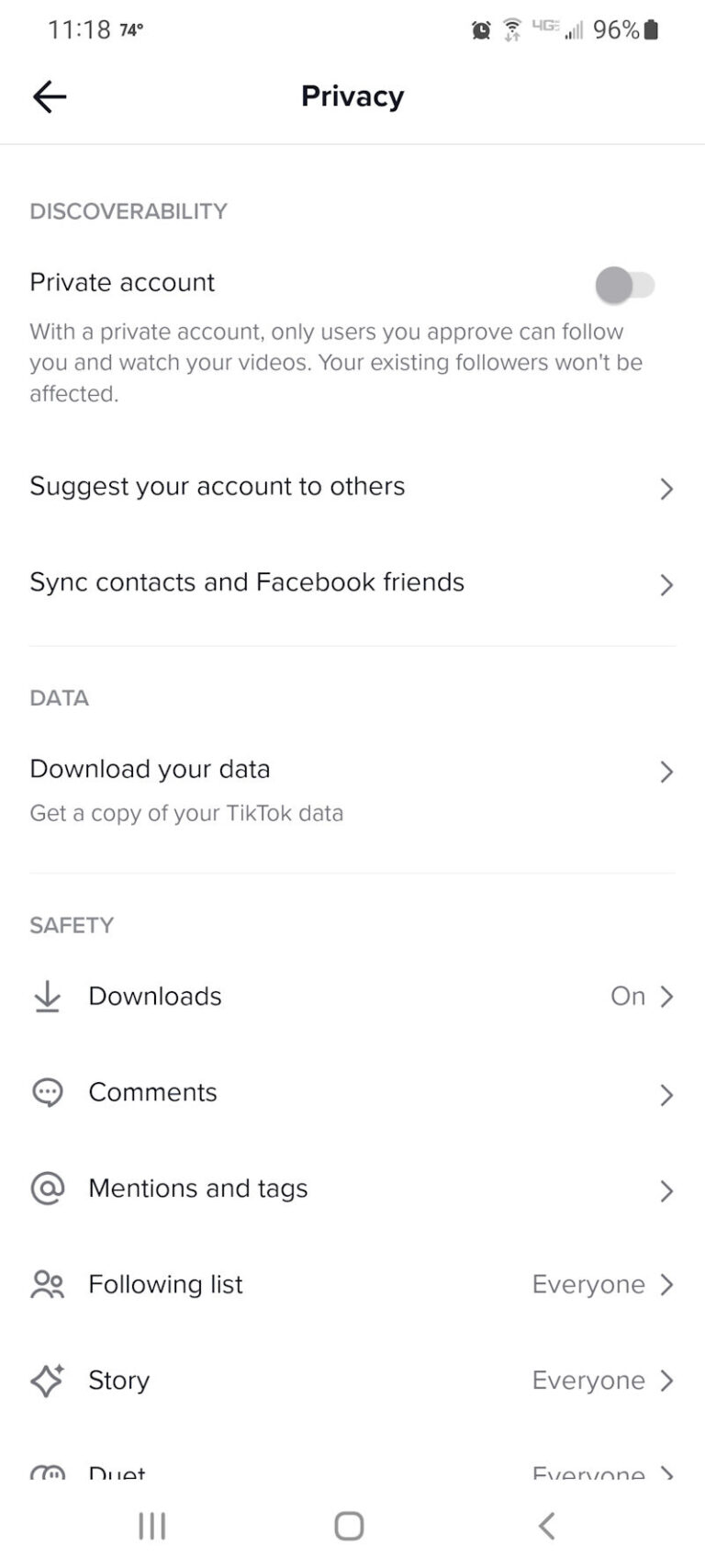
Image: SafeWise
How do you use TikTok safely? If you don’t want to give up TikTok, you can do a few things to protect your mental, data, and physical health:
- Watch positive, happy videos. The more happy, funny, cute videos you watch, the more they will end up in your FYP. Also, stay clear of triggers. For example, if you struggle with disordered eating, skip posts that talk about weight loss.
- Don’t engage with trolls. Stay out of fights in the comments and ignore people with hateful comments. They’re just doing it for attention. Don’t give it to them. Save your energy.
- Ignore the haters. This one’s hard, but try your best to ignore those who say mean things about your videos or physical appearance. Remember, the blocking option is your friend.
- Be private. Before posting, check your videos for things that can identify you or your location to other users. For example, blur out your car’s license plate or your house number. Doing this will help to deter potential stalkers.
- Use a VPN. If you’re concerned about all the user data the TikTok app collects, set up a VPN. Our VPN guide will get you started.
- Use the privacy settings. On your profile page, tap on the menu, select Settings and Privacy, and then click Privacy. From there, you can choose who can follow you, comment on your videos, Duet and Stitch your videos, and more. You can also make your profile completely private if you just use TikTok to browse, not post.
- Use the Digital Wellbeing features. In the settings, tap on Digital Wellbeing. Then, decide how much screen time you want to limit yourself to when you’re on the app and set up the timer or screen-time breaks.
- Use a parental control app to control how much your child uses the app. Our top pick for a TikTok parental control app is Bark.
FAQ
Scams through DMs are common, and the app tracks, records, and shares your information. You should also know that the app can be detrimental to your mental health.
TikTok can’t steal something that’s given to it. When you sign up, TikTok’s privacy policy clarifies that it's taking whatever personal information it can. If you have privacy concerns, it’s probably best not to use the social network app.
It will disappear from your phone, but TikTok will still have all of the personal data about you that it has already collected. You’ll need to fill out a request form to remove your information.
Yep, you sure can. Tracking who looks at your profile can help you detect potential stalkers.
All you need to do is turn on the profile view option on the TikTok app. Tap on the person icon at the bottom of the screen, and then tap the footprint icon in the upper right corner. Toggle the switch to turn on the profile view history.
Now, whenever you tap the footprint icon (sometimes it will show the face of someone who looked at your profile), you can see who looked at your profile. Just be warned that once this is turned on, other people can see if you look at their profiles as well.
Have you decided that TikTok isn't for you? Here's how to get rid of it:
1. Tap on the Profile icon on the bottom right of the app.
2. Tap the 3-line menu icon in the top right.
3. Tap Settings and Privacy.
4. Tap Account and then Deactivate or Delete Account.
5. Follow the on-screen instructions to finish.
Related articles on SafeWise
Sources
- FTC, Emma Fletcher, “Social Media a Gold Mine for Scammers in 2021,” January 25, 2022. Accessed April 14, 2025.
- Journeyman Pictures, “TikTok,” 2022. Accessed April 14, 2025.
- Movement Disorders, Caroline Olvera, MD, “TikTok Tics: A Pandemic Within a Pandemic,” July 28, 2021. Accessed April 14, 2025.
Recent Articles
